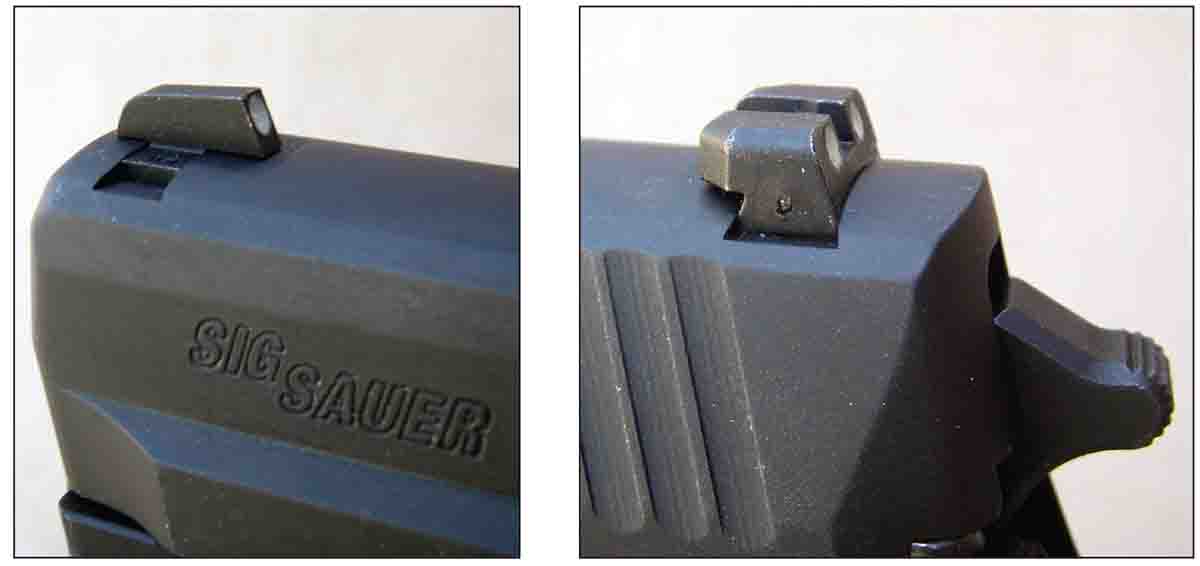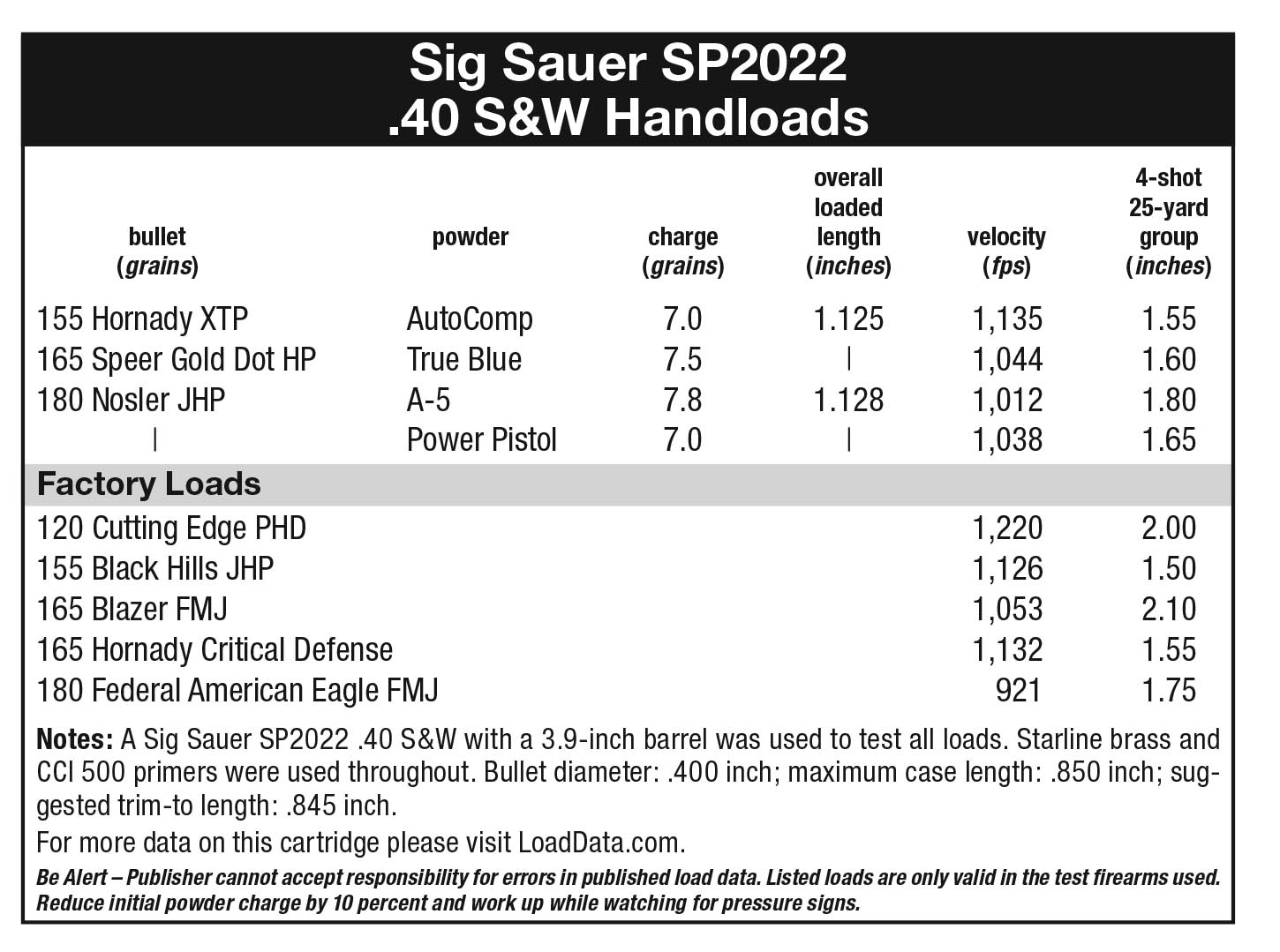From The Hip
Sig Sauer SP2022 .40 S&W
column By: Brian Pearce | October, 19
The Sig Sauer Pro pistol series was developed in 1998 and was the company’s first to feature a polymer frame. It was developed jointly by Switzerland based Schweizerische Industrie Gesellschaft (SIG) and J.P. Sauer & Sohn, thus the “SIG Sauer” name. Currently they operate under the title of SIG Arms AG. SIG Sauer has been producing high-quality double-action/single-action semi- automatic pistols for many decades, with a notable example being the P220 that first appeared in 1976.
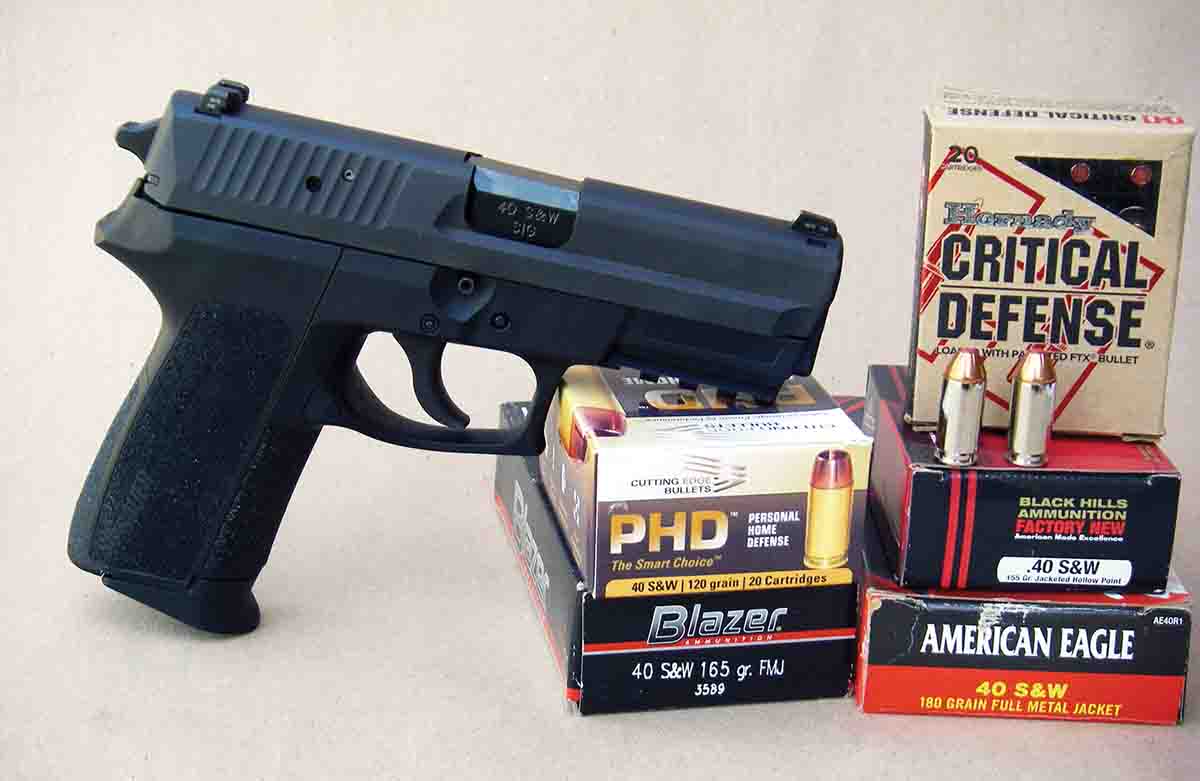
A SIG Sauer SP2022 .40 S&W produced in Exeter, New Hampshire, was selected for review. A factory source indicated this particular variant chambered in 9mm NATO was designed specifically for French law enforcement and internal security agencies (National Gendarmerie, National Police, French Customs, etc.) to replace their PAMAS G1 service pistol, a variant of the aging Beretta 92.
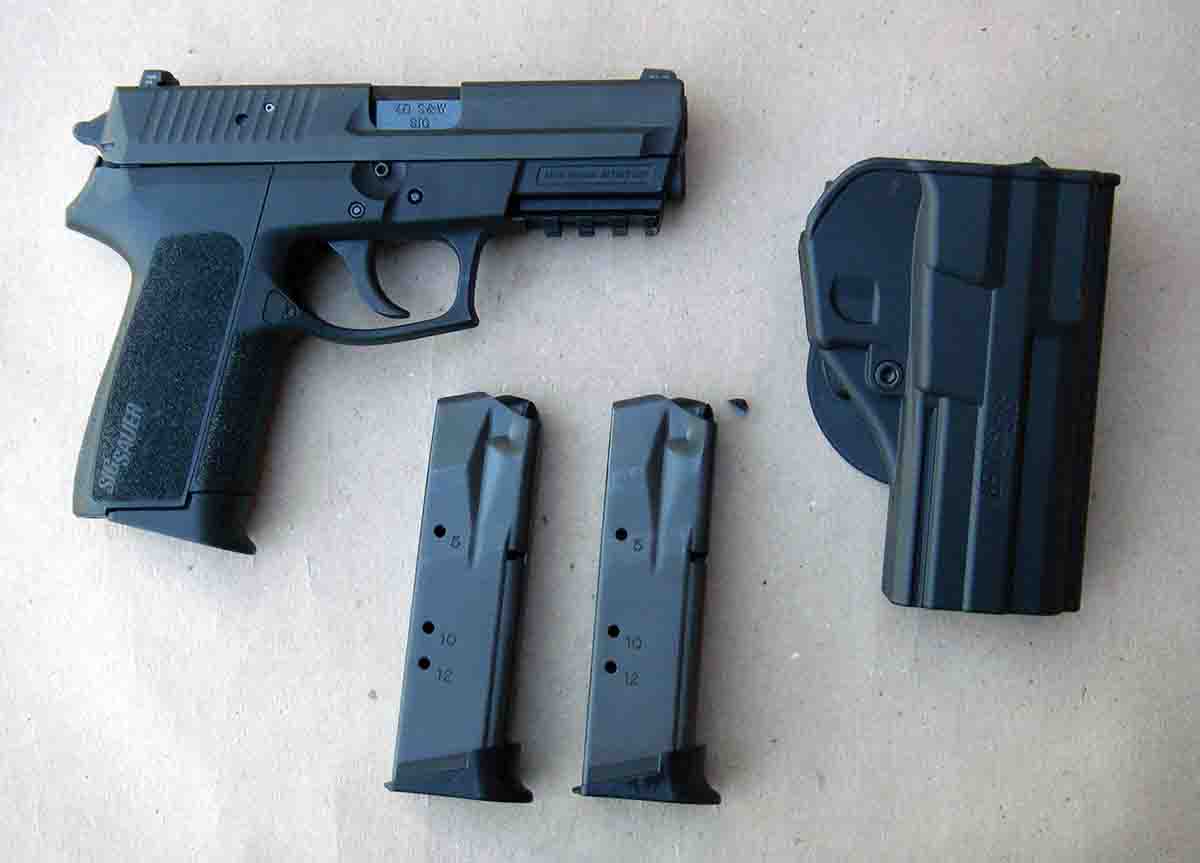
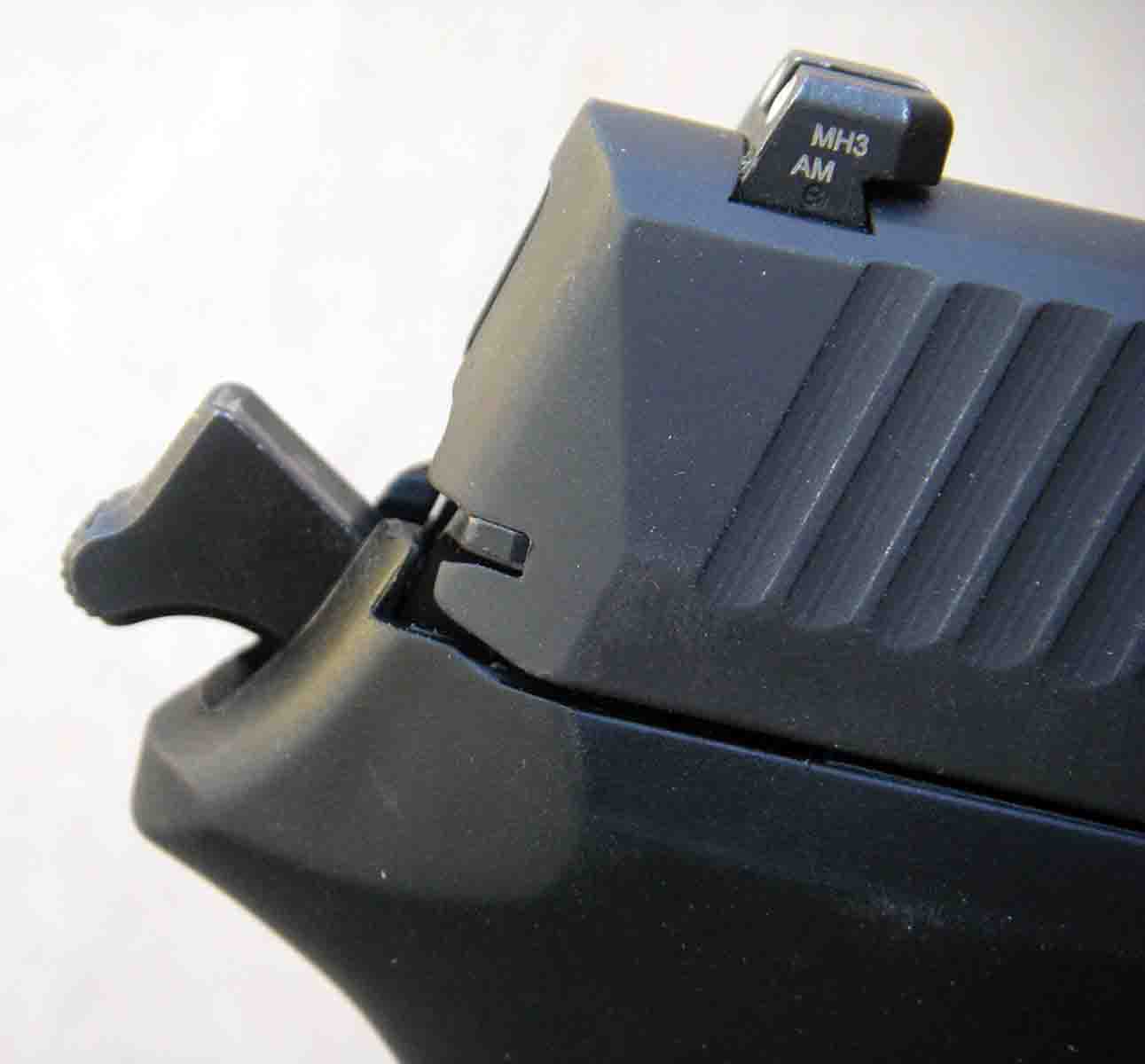
The polymer frame SP2022 is a full-size pistol that weighs a mere 29 ounces, which is notably less than similar steel frame counterparts. With a street price starting at around $450, it can be purchased for roughly half the cost of comparable all-steel SIG Sauer models and is more than competitively priced when compared with the competition featuring polymer frames. What is really interesting is SIG Sauer puts forth very little effort at promoting the SP2022, yet it boasts of robust
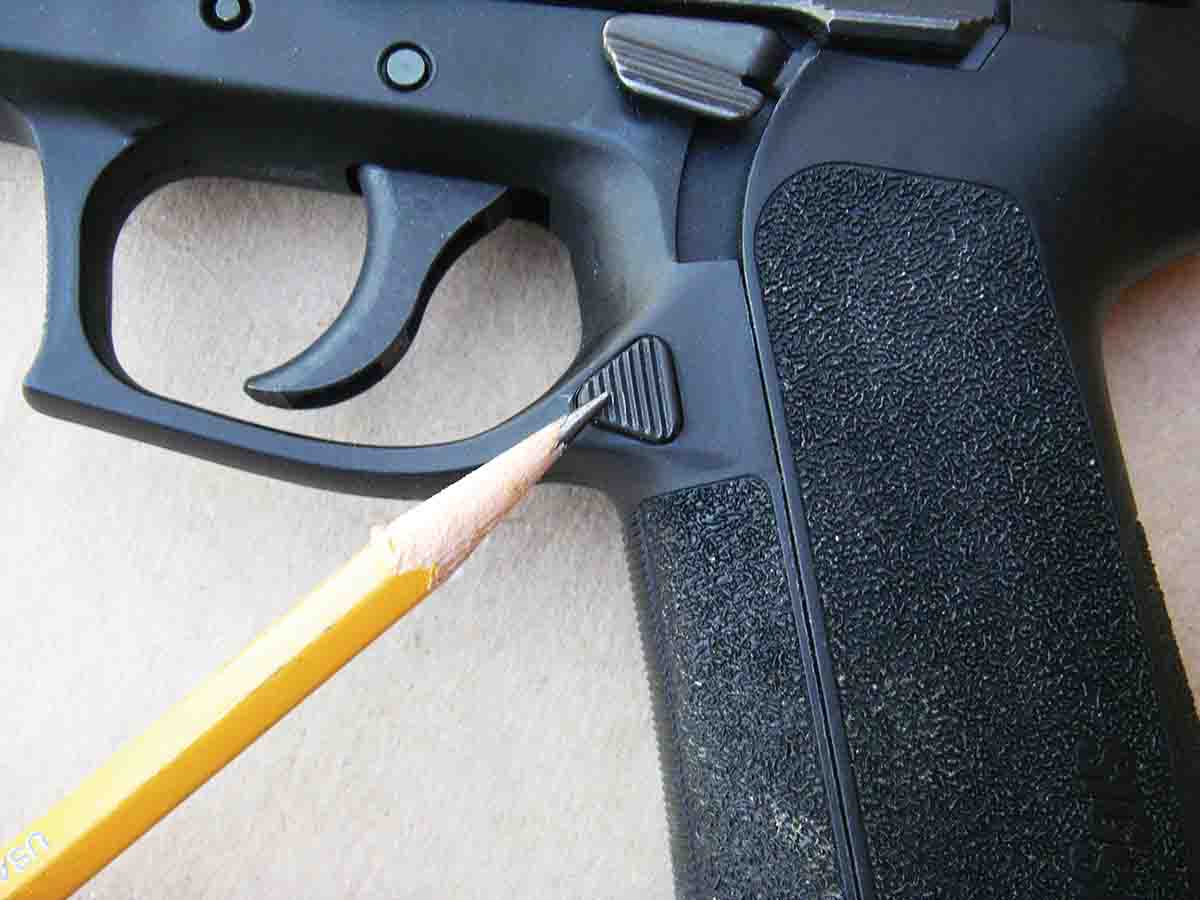
As indicated, the SP2022 is a double/single-action semiautomatic design with an external hammer. It is short-recoil operated with a locked breech design based on the Browning cam-operated system, with the barrel locking into the slide via the ejection port. It features a decocking lever that requires only minimal travel to engage, and an easy-to-reach magazine catch.
The double-action (DA) pull is around 10 pounds while the single-action (SA) pull broke at just over 4.5 pounds. The DA pull is smooth and fluid all the way through the cycle. The trigger is smooth with rounded edges, which is much preferred for DA shooting. The trigger shape also receives high marks as hundreds of rounds can be fired in a single session without any “wear and tear” to the trigger finger. The SA pull has an ordinary amount of take-up for a double/single action autoloading pistol, with only slight creep and respectable pull. The slide catch lever extends back far enough to allow practically all shooters to maintain their grip and release the slide catch lever with the thumb to drop the slide.
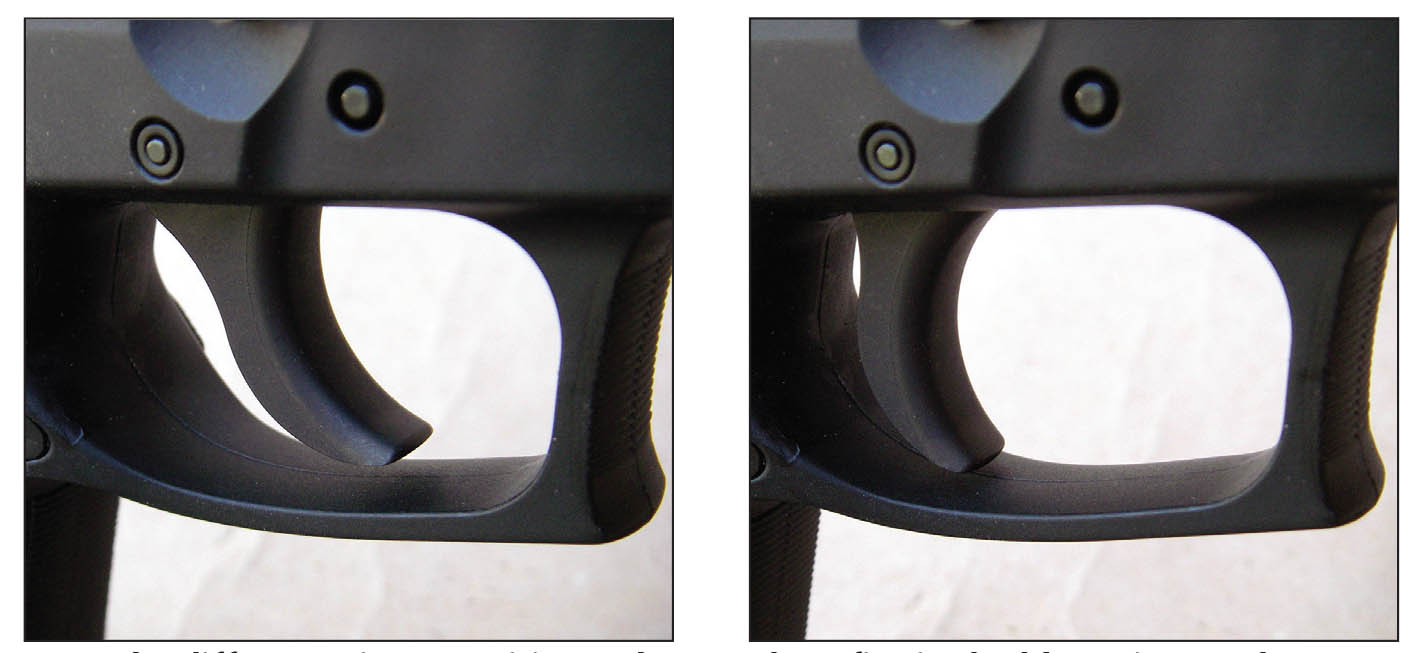
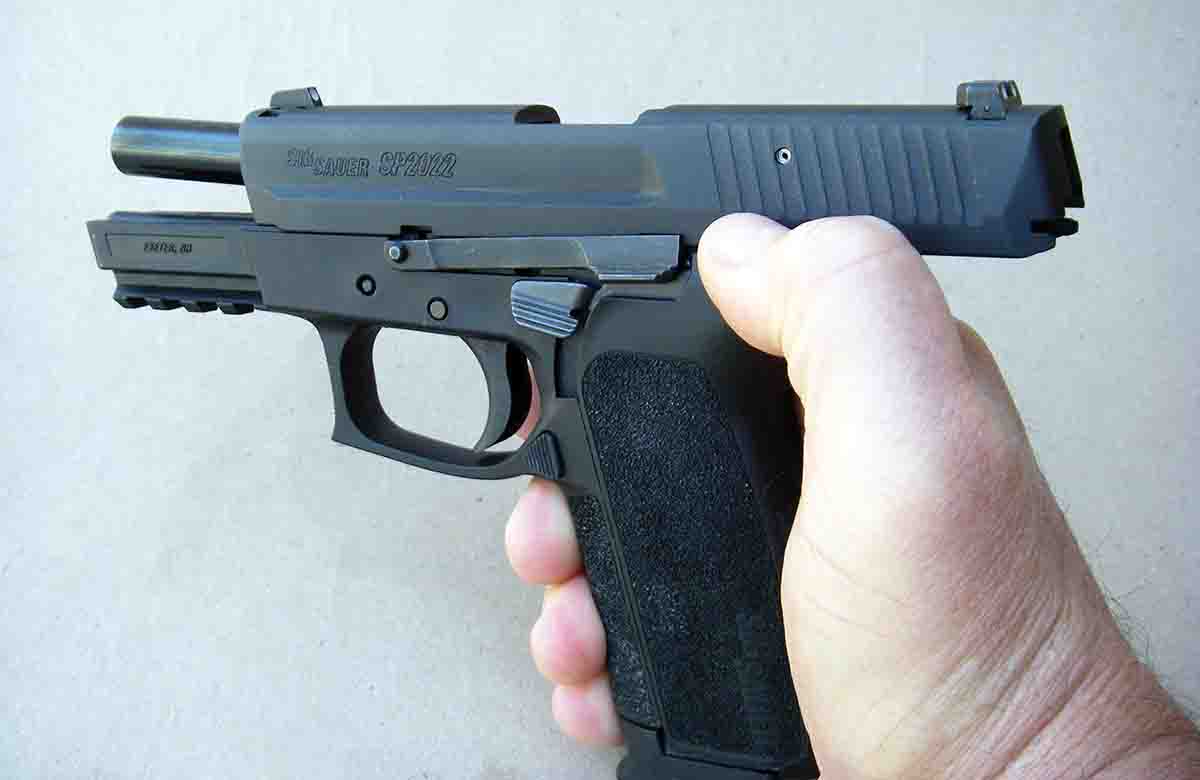
The slide is constructed of stainless steel and coated with Nitron, which results in a flat-black finish that is tough and wear resistant. The sights are dovetailed into the slide, with the sample gun featuring optional SIGLITE night sights. Disassembly is quick and simple for easy cleaning and maintenance.
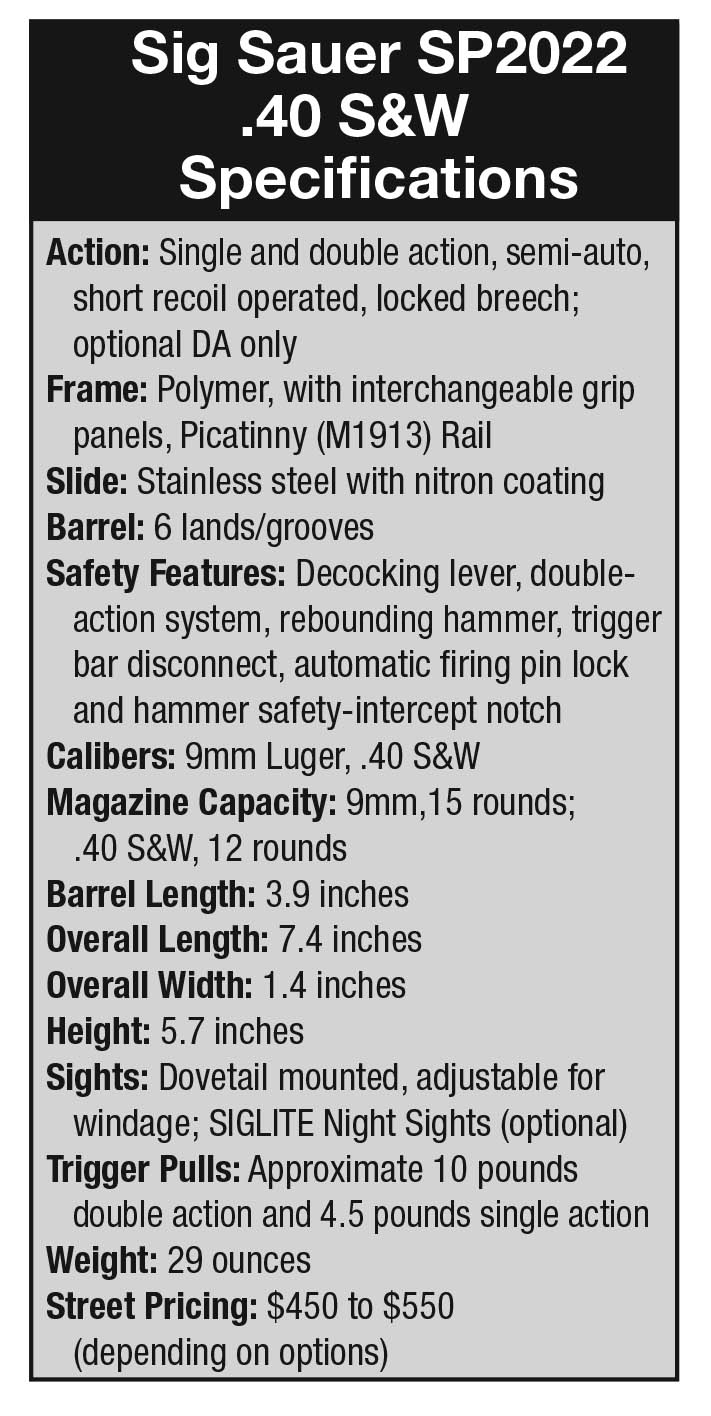
The first thing that really stood out was the overall accuracy of the SP2022. For example, using Black Hills’ 155-grain JHP load (new manufacture), 25-yard groups clustered into 1.50 to not over 2.00 inches while Hornady’s 165-grain Critical Defense load produced virtually identical results. Even economical loads such as Blazer 165-grain FMJ (aluminum case) and Federal American Eagle 180-grain FMJ produced groups that hovered around 1.75 to 2.25 inches.
Moving on to a few select hand-loads, the Hornady 155-grain XTP was pushed to 1,135 fps using 7.0 grains of Winchester AutoComp powder, which produced one group that measured an impressive 1.55 inches at 25 yards. The Speer 165-grain Gold Dot HP bullet was pushed to 1,044 fps using 7.5 grains of Ramshot True Blue powder and produced several groups that had an average of 1.70 inches. For a heavyweight bullet, the Nosler 180-grain JHP was pushed to 1,038 fps using 7.0 grains of Alliant Power Pistol powder. Again, all groups hovered between 1.65 to 2.0 inches. The above loads were assembled using new Starline cases and were capped with CCI 500 primers. Cases were taper crimped to .417 inch. All handloads functioned without a hitch.
